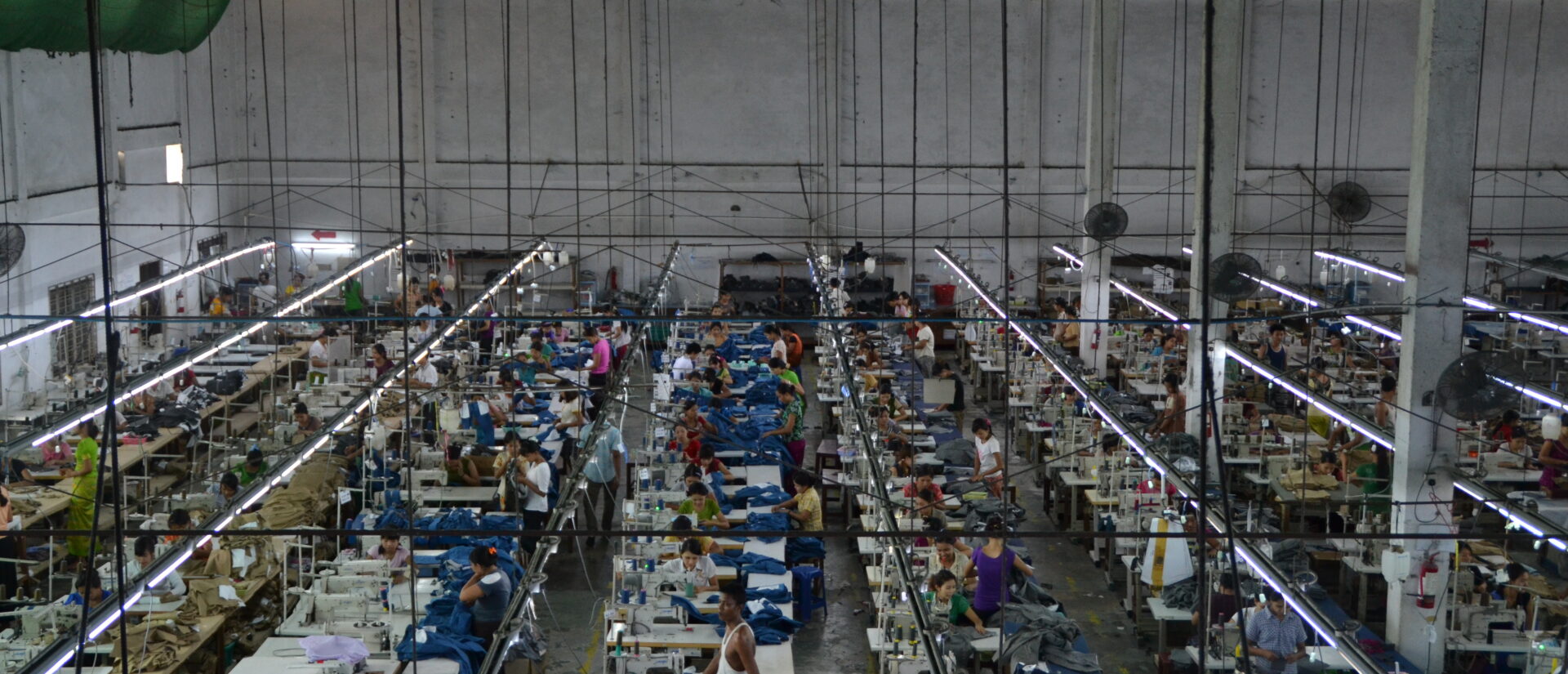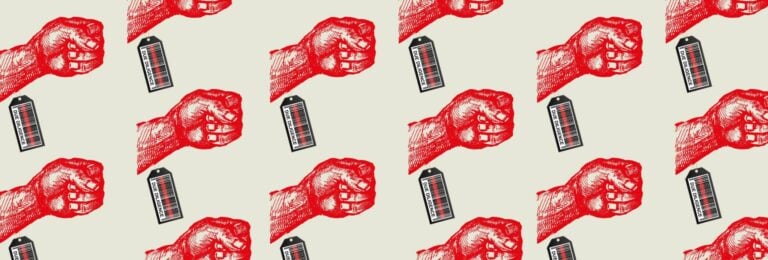
Comprehensive reaction to outcome C&A complaints procedure
Disappointing outcome of grievance procedure against C&A
Workers at Myanmar garment factory don’t profit
Reaction of SOMO, CCC, and Myanmar labour rights organisation to the verdict in the complaints procedure concerning C&A
This week the Complaints and Disputes Committee (CDC) of the Dutch Agreement on Sustainable Garments and Textile published its final decision on a complaint filed by a , together with SOMO and the Clean Clothes Campaign (CCC), against C&A in July 2020. The complaint revolved around C&A’s failure to protect freedom of association at a supplier in Yangon, Myanmar. The complaint procedure took almost two years and left the workers out in the cold.
In the ruling, the CDC declared the complaint partially founded. SOMO, CCC, and “Z” were vindicated with regard to C&A’s failure to uphold trade union freedom in the factory concerned and to meaningfully involve stakeholders.
Despite the vindication of these important points, we as complainants are highly critical of the problematic procedure and the substantive assessment and treatment of the complaint, which demonstrates an incorrect application of the OECD Guidelines for Multinational Enterprises. The handling of the complaint has taken an unacceptably long time. The grievance procedure has not led to any significant improvement for the workers at the factory concerned. Given the ineffectiveness of the CDC, we advocate robust grievance mechanisms and strong legislation on responsible and sustainable business practices as expected of governments under the UN Guiding Principles on Business and Human Rights.
Reason for the complaint
In June 2018, problems began at the factory, for many years an important supplier to C&A. Workers were concerned about wages, among other things, and with the help of “Z” organised themselves into a basic labour organisation, a factory trade union. The management reacted aggressively and crushed the union. Workers who played an important role in the union were systematically harassed and intimidated. Five of them were fired or forced to resign.
Alarmed by the aggressive attitude of the management, CCC, SOMO, and “Z” tried to enter into dialogue with C&A about the problems at this supplier. For about two years, we tried to persuade C&A to take a focused approach to the problems. During this period, C&A did not do enough to ensure workers could organise themselves into a trade union.
When these attempts came to nothing, we turned to the Dutch Agreement on Sustainable Garments and Textile in the hope and expectation that the Complaints and Disputes Committee would be able to hold C&A to its commitments under the agreement concerning freedom of association.
Final ruling
In its final judgment, the CDC declared the complaint to be partly justified. CCC, SOMO, and “Z” were vindicated in respect of C&A’s failure to uphold trade union freedom in the factory concerned and to meaningfully involve stakeholders. According to the committee, C&A should have involved “Z” as a legitimate stakeholder in the resolution of the problems and made use of the knowledge and expertise of this and other organisations such as SOMO and CCC. C&A should also have shared more information with these parties and should have consulted with “Z”, CCC, and SOMO about its disengagement from the factory and departure from Myanmar.
Despite the fact that SOMO, CCC, and “Z” have been vindicated on these important points, we are not satisfied with the proceedings or their outcome. The procedure has not brought any significant improvement for the workers at the factory. No trade union was formed. The dismissed workers were not reinstated.
The Dutch garments and textile agreement was terminated on 31 December 2021. The announced end of the agreement hung like a sword of Damocles over the proceedings. The complainants repeatedly pointed this out and urged the CDC to act urgently – unfortunately, without result. Now there is at last a final judgment, but no authority remains to hold C&A to it. In the meantime, C&A has severed its buying relationship with the factory, and the Taiwanese owner has transferred the factory to a new owner. C&A withdrew completely from Myanmar after the military coup on 1 February 2021. However, the factory, after closing temporarily, is once again in operation under the new owner, with some of the old staff.
CDC judges C&A’s responsibility too lightly
The OECD Guidelines for Multinational Enterprises and the OECD Due Diligence Guidance for Responsible Business Conduct offer a framework to determine to what extent a company is involved in wrongdoing. The Dutch Agreement on Sustainable Garments and Textile is based on this framework. The CDC should have applied it, but it did so incorrectly.
CDC finds that C&A has failed to ensure trade union freedom is respected in the factory and has also failed to conduct a meaningful stakeholder dialogue with “Z” in particular. Despite this, the committee is of the opinion that C&A, through its buying relationship, has not made a “contribution” to the violations of employment rights at the factory in Myanmar. CCC, SOMO, and “Z” are convinced that C&A – according to the OECD Guidelines – did indeed “contribute” to the problems at the supplier. The CDC judged C&A on its efforts, not on whether those efforts were effective. Human rights due diligence is not only about the efforts made and resources deployed, but also about the concrete results that need to be achieved.
In this final judgment, the CDC makes a poorly substantiated distinction about the nature of human rights violations: individual violations on the one hand and generic violations on the other. The CDC seems to regard this case primarily as a generic human rights violation (regarding freedom of association). CCC, SOMO, and “Z” have shown during the proceedings that there have also been serious violations of the rights of individuals at this factory. Leaders and members of the trade union were put under personal pressure. Five of these trade union activists lost their jobs. One of these five activists has been unable to find work in the clothing sector and now works as a farmer. A second activist is now forced to work in what “Z” calls “one of the worst factories of its kind”. Two others still work in the clothing industry but under significantly less favourable employment conditions.
C&A negligent with regard to freedom of association
The right to free trade unionisation and the right to collective bargaining are fundamental labour and human rights. They are essential condition-setting rights. As such, the right to free trade union representation was also included as one of the nine priority topics in the Dutch garments and textile agreement and was a core commitment for C&A as an agreement signatory. The violation of these fundamental preconditions must be regarded as a serious adverse impact that must be addressed directly and effectively.
On the basis of the following arguments, SOMO, CCC, and “Z” conclude that C&A made a substantial contribution to the adverse effects on the workers at this factory:
- Trade union oppression was a well-known risk in Myanmar.
- Since the military coup of 1 February 2021, many trade unions and labour rights organisations, including “Z”, have been banned. This means that workers are even less protected than before.
- Trade unions are particularly vulnerable in the establishment phase.
- C&A has not done enough to correct the unlawful actions of the management of this supplier factory.
- Ultimately, a factory trade union was never able to get off the ground.
- A worker coordination committee (WCC) is not the same as an independent trade union.
- The WCC at this factory did not even have an independent workers’ section due to management interference.
- In the entire period since July 2018, C&A has operated in a solitary manner. C&A has always unilaterally determined with whom it engaged in dialogue and with whom it did not, instead of engaging in meaningful dialogue and cooperation with concerned stakeholders, especially “Z”. A significant proportion of the workforce at this factory had confidence in “Z”, including as an adviser in setting up the factory trade union. By rejecting “Z” as a discussion partner, C&A has denied the workers at this factory the right to cooperate with a trusted labour rights organisation of their choice. C&A has completely ignored the interim decision of the CDC that C&A should involve “Z” as an interested party.
- C&A unilaterally chose which problems to tackle and which to ignore. For example, C&A chose to investigate the problems surrounding the functioning of the WCC, which was indeed necessary, but at the same time refused to look closely at the problem of obstructing the formation of a factory union and the involuntary dismissal of the five leaders and activists of the young union in 2018.
The CDC has noted some of these points in the final ruling, but it does not attach sufficient weight to them. The committee has incorrectly applied the OECD Guidelines.
Instead of a thorough analysis of the facts, using the criteria provided by the OECD Guidelines, the CDC has produced a flawed narrative. The committee has drawn the wrong conclusion about the relationship between C&A and the irregularities at the supplier.
Irresponsible disengagement
Since the military coup on 1 February 2021, many foreign manufacturers and buyers have left Myanmar. C&A has also left and says it did so partly in response to calls from international trade union organisations. C&A and the CDC both fail to mention that there are also Myanmarese and international organisations that have a different view on this and advocate that companies stay in Myanmar to preserve jobs in the clothing industry. Many clothing brands have stayed in Myanmar, including one that used to buy from the factory that is the subject of this complaint. Within the international framework of standards on human rights and business, there is no clear definition yet of how companies should responsibly withdraw from a country in political and economic crisis. Nevertheless, the CDC appears firm in its opinion that C&A has left Myanmar responsibly.
The CDC also states that C&A has acted responsibly by breaking off the purchasing relationship with this particular supplier. CCC, SOMO, and “Z”, however, are of the opinion that C&A has also failed in this respect, especially if one considers the expectations of responsible disengagement in the OECD Guidelines and the UN Guiding Principles on Business and Human Rights. We explained this in detail in our last plea. The CDC has not accepted this argument.
Our main points of criticism are as follows:
The CDC does not ask what influence C&A’s announcement that it would leave Myanmar in spring 2021 had on the decision of JDU, the Taiwanese owner, to close and then sell the factory. The committee assumes that C&A presented JDU with a unilateral fait accompli, without knowing whether C&A’s announcement of departure might have influenced JDU’s decision to close.
C&A did not want to exchange information with CCC, SOMO, and “Z” about the closure of the factory and its JDU’s departure from Myanmar. C&A has not informed or consulted CCC, SOMO, and “Z” about the possible impact of its ceasing to do business with the factory, despite repeated questions from us. C&A did involve the Myanmar trade union federation, although this federation never had any members in the factory. Here, too, C&A demonstrated a one-sided commitment to its stakeholders.
The factory was closed down for a time and then reopened under a new name (“Good Future”) with a new owner. Only a limited number of the old staff were taken on by the new owner. “Z” reported (in conversation with CCC and SOMO on 30 June) that about 25 per cent of the workers could stay, while 75 per cent had to look elsewhere for work, often under worse conditions than before. This is in spite of the fact that SOMO, CCC, and “Z” had asked C&A to ensure that the new owner would keep all the workers in its employ. We had also argued that the five trade union activists who had been dismissed earlier be reinstated.
Procedural criticisms
The complaints procedure took far too long
Between the submission of the complaint and the final verdict, almost two years elapsed. That is unacceptably long.
Moreover, a lot has happened in the period 2020-22 that should have accelerated the procedure: the coup d’état, severance of C&A’s purchasing relationship, and C&A’s departure from Myanmar.
It was known from the start that the Dutch garments and textile agreement would come to an end on 31 December 2021. With this date in mind, the CDC should not have issued an interim ruling in May 2021. This unnecessarily delayed the procedure.
As part of the interim decision, the CDC advised the parties to enter into dialogue, completely ignoring the fact that the complainants had already been trying to enter into dialogue with C&A for two years. Waiting in vain for this dialogue has caused delays.
Procedural unpredictability
A good complaints mechanism is predictable. This complaints procedure, however, was characterised by a high degree of improvisation and unpredictability.
- As the proceedings progressed, it became apparent that the CDC needed several hearings to reach a final decision.
- The CDC unexpectedly issued an interim ruling in May 2021, instead of immediately issuing a final ruling.
- In this interim decision, the CDC ruled on only part of the complaint, rather than addressing the entire complaint.
- This interim decision also contained a “recommendation” to the parties to enter into dialogue with each other.
- To reach a final decision, the proceedings had to be reopened, which required the presentation of a new memorandum.
Not a safe place
A good complaints mechanism provides a safe place for complainants. That was not the case here. In the original complaint and during the hearings, SOMO, CCC, and “Z” explained how the factory management undermined the trade union with targeted intimidation. During the hearings, a number of witnesses from Myanmar emphatically and convincingly confirmed this, based on their own experiences. Despite the fear of possible repercussions, they told their story. In post-coup Myanmar, security risks have increased markedly for workers who speak out critically and for civil society organisations.
- The CDC has shown no insight into the skewed balance of power between C&A and the workers affected; between C&A and “Z”; and between C&A and CCC and SOMO. A large company like C&A has considerably more financial resources and legal clout than NGOs like us.
- The presence and major role of C&A’s lawyers during the hearings set the tone.
- The Myanmar witnesses were not interviewed during the hearings; on the contrary, they were interrogated.
- During one of the hearings C&A questioned the testimony of the Myanmar workers in a disrespectful manner without the CDC intervening.
- In the final ruling, the CDC seems to have attached little value to these directly involved witnesses; there is little or no reference to their testimonies. The committee seems to have attached more value to the information provided by C&A and .
Complaints mechanism’s lack of accessibility
A good complaints mechanism is accessible and approachable, especially for rights holders. That was not sufficiently the case here.
- The CDC’s rules of procedure frequently use semi-legal jargon.
- Initially, the CDC did not actively facilitate the participation of local parties (rights holders, witnesses, and experts) such as by arranging for interpretation and taking into account the time zone difference between the Netherlands and Myanmar.
- The CDC did not proactively offer the Myanmar witnesses compensation for lost wages due to missed working days or for travel costs incurred.
- The CDC had no budget available for the cost of translating court documents.
Lessons
There are important lessons to be learned from this entire complaints procedure. These lessons are relevant for C&A in the first instance, for other clothing companies, and also for the improvement initiatives active in the clothing sector, such as the Ethical Trading Initiative (ETI), Fair Wear Foundation (FWF), and German Partnership for Sustainable Textiles (PST).
In addition, these lessons apply to parties currently involved in negotiations in the Netherlands on a possible successor to the garments and textile agreement, the so-called “next generation agreement” (NGA).
They are also relevant for parties involved in preparing Dutch and European legislation on international corporate accountability and human rights due diligence.
Key points:
- A complaints mechanism must be based on the highest prevailing relevant standards, in this case the OECD Guidelines and UN Guiding Principles. When a body assesses complaints, it must apply these standards correctly, clearly, and transparently. The responsibility scenarios distinguished in the OECD Guidelines must be properly applied.
- A complaints mechanism must be transparent, effective, and accessible.
- A complaints mechanism must offer a safe place for affected and involved local people and organisations to tell their story.
- Concrete results and remedy for rights holders must have priority over the efforts required of companies.
- The set-up and course of a complaints procedure must be clear and predictable, with clear steps and milestones within a realistic timeframe.
- A complaints procedure must take into account any differences in power and capacity between the parties involved.
- To promote a level playing field, all parties involved in a complaints procedure must have access to the same information at the same time. Possible language barriers must be taken into account. Procedural documents, email messages, etc. must be translated and made available to everyone at the same time as the originals. At hearings and other consultations, there must be use of the services of professional interpreters familiar with the subject matter and the jargon. This must be taken into account when planning the steps in the procedure, and there must be a budget for this.
- Up-to-date knowledge of the specific context in a country or region is indispensable.
Partners
Related news
-
 The hidden human costs linked to global supply chains in ChinaPosted in category:News
The hidden human costs linked to global supply chains in ChinaPosted in category:News Joshua RosenzweigPublished on:
Joshua RosenzweigPublished on: -
 Major brands sourcing from China lack public policies on responsible exitPosted in category:News
Major brands sourcing from China lack public policies on responsible exitPosted in category:News Joshua RosenzweigPublished on:
Joshua RosenzweigPublished on: -
Linking labour issues in China to global brands Published on:Posted in category:Publication


